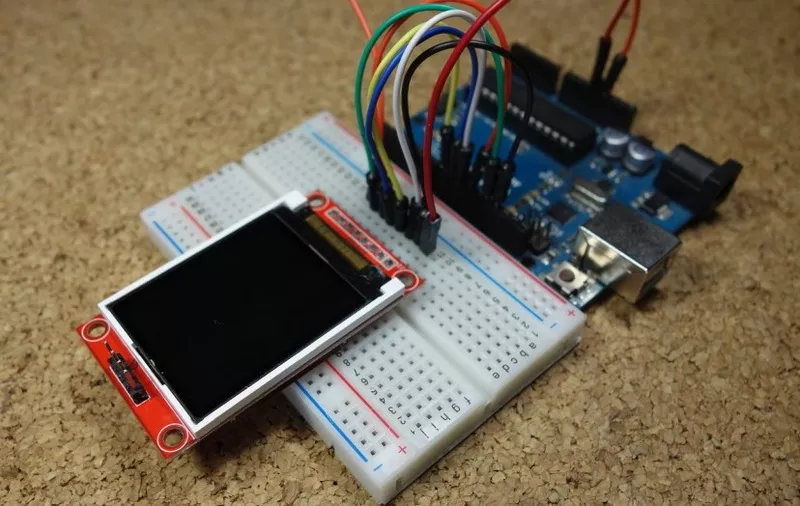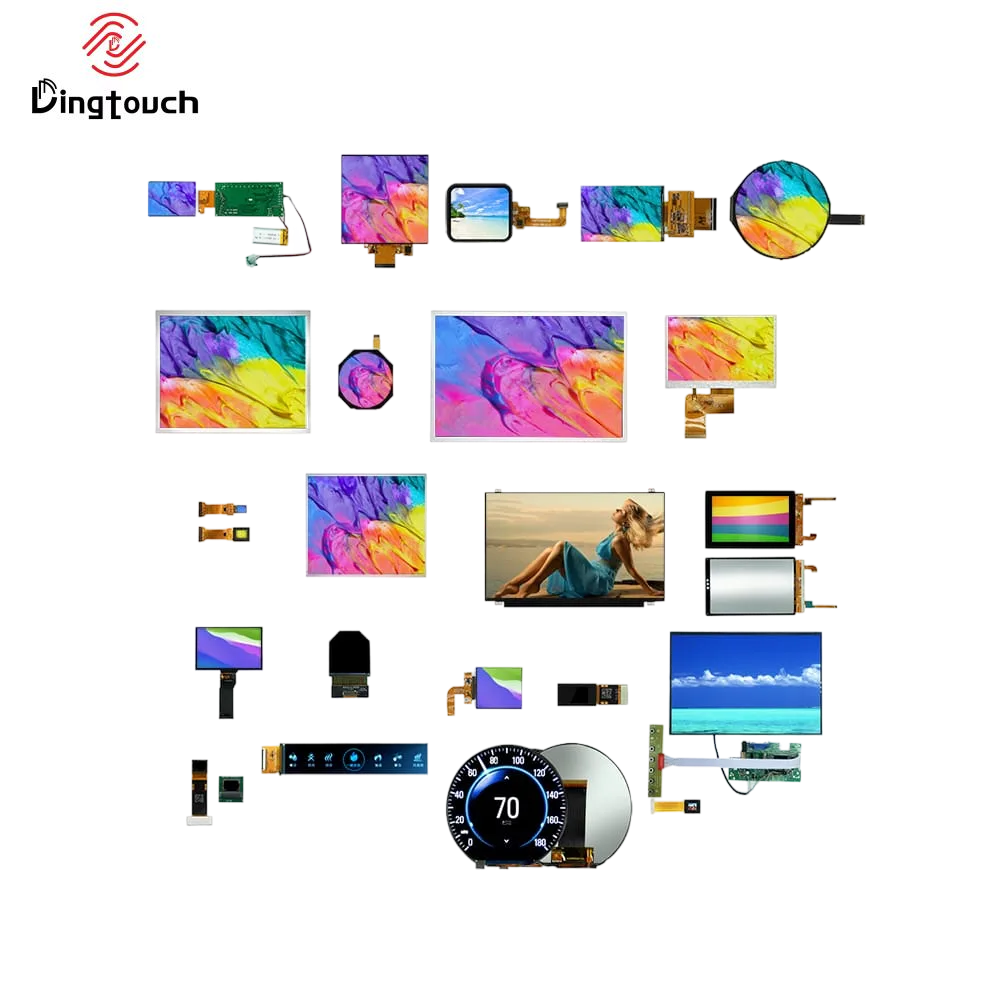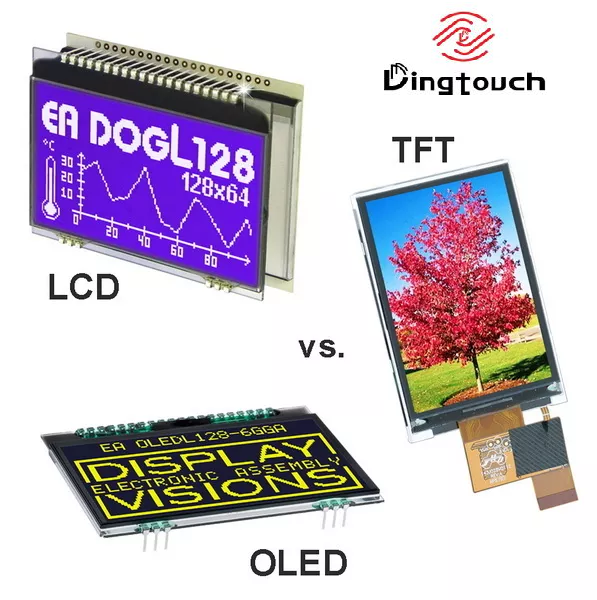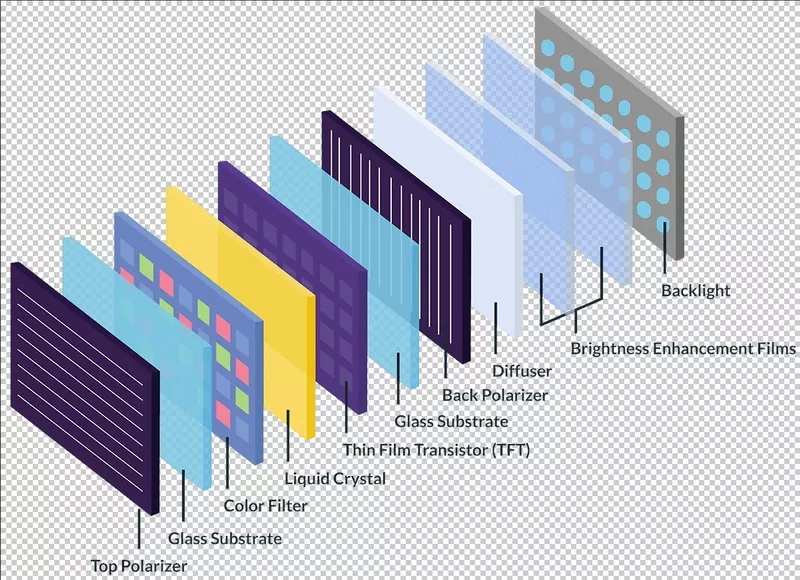News
How To Choose A Tft Lcd Display Module?
How To Choose A Tft Lcd Display Module?
Content Menu
● Understanding TFT LCD Technology
● Key Considerations When Choosing a TFT LCD Display Module
>> 1. Size
>> 9. Durability and Reliability
● Practical Steps in Selecting a TFT LCD Display Module
>> 1. What is the difference between TN and IPS display?
>> 2. How does brightness affect display performance?
>> 3. Can I use a TFT LCD without a touchscreen?
>> 4. What factors influence power consumption in TFT LCD?
>> 5. How do I connect a TFT LCD module to an Arduino?
Choosing the right TFT LCD display module for your project can be a daunting task, given the vast array of options available in the market. TFT (Thin Film Transistor) LCD are widely used in various applications, from consumer electronics to industrial devices, due to their superior image quality and responsiveness. This guide will walk you through the essential factors to consider when selecting a TFT LCD display module, ensuring that you make an informed decision tailored to your specific needs.
Understanding TFT LCD Technology
Before diving into the selection process, it's crucial to understand what a TFT LCD is and how it works. A TFT LCD consists of several key components:
- TFT Array Substrate: This is where the thin-film transistors are located, allowing for individual pixel control.
- Color Filter Substrate: This layer adds color to the display by using red, green, and blue filters.
- Liquid Crystal Layer: This layer manipulates light to create images.
- Backlight Unit: Provides illumination for the display.
- Driver ICs: Control the display's operations and manage signals.
The combination of these components allows for high-quality image reproduction with vibrant colors and sharp details. Understanding these components helps in appreciating why certain specifications matter more than others depending on your application.
Key Considerations When Choosing a TFT LCD Display Module
When selecting a TFT LCD module, consider the following factors:
1. Size
The size of the display is one of the first considerations. You need to determine both the outline dimensions (width, height, thickness) and the active area (the part of the screen that displays content). Common sizes range from 1.0” to 32” depending on your application needs.
For instance, smaller displays are often used in handheld devices like smartphones or portable gaming consoles, while larger displays are favored in televisions and monitors. The physical space available in your device design may also limit your options.
2. Resolution
Resolution significantly impacts the clarity and sharpness of displayed images. Higher resolutions provide better detail, which is essential for applications requiring fine visuals. For instance, a resolution of 1920x1080 (Full HD) is suitable for most consumer electronics, while 4K resolutions (3840x2160) are becoming standard in high-end displays.
Additionally, consider pixel density (measured in pixels per inch or PPI). A higher PPI means more pixels are packed into each inch of screen space, resulting in sharper images. This is particularly important for applications such as medical imaging or graphic design where detail is paramount.
3. Brightness
Brightness is crucial for readability in various lighting conditions. Displays with higher brightness levels (measured in nits) are necessary for outdoor applications where sunlight can wash out images. Standard brightness levels range from 200 nits for indoor displays to over 1000 nits for sunlight-readable screens.
It's also important to consider how brightness affects power consumption; higher brightness typically leads to increased energy usage. Therefore, balancing brightness requirements with power efficiency is essential, especially for battery-operated devices.
4. Viewing Angle
The viewing angle determines how well the display can be seen from different perspectives. TN (Twisted Nematic) panels typically have limited viewing angles, while IPS (In-Plane Switching) panels offer wider angles, making them more suitable for applications where multiple viewers may be present.
For example, if you're designing a digital signage solution that will be viewed from various angles by passersby, an IPS panel would be preferable due to its superior viewing angles and color consistency across different perspectives.
5. Contrast Ratio
Contrast ratio affects how well images stand out against their background. A higher contrast ratio means deeper blacks and brighter whites, enhancing overall image quality. For example, IPS displays generally have higher contrast ratios compared to TN displays.
A good contrast ratio is particularly important for media applications where color accuracy and vibrancy are critical. In contrast-sensitive environments like photography or video editing studios, choosing a display with a high contrast ratio can make a significant difference in visual output quality.
6. touchscreen Capability
If your application requires user interaction, consider whether you need a touchscreen feature. Capacitive touchscreens offer better responsiveness and multi-touch capabilities than resistive touchscreens but may be more expensive.
touchscreen technology has evolved significantly; modern capacitive screens can support gestures like pinch-to-zoom and swiping motions that enhance user experience in applications ranging from smartphones to interactive kiosks.
7. Temperature Range
For industrial or outdoor applications, ensure that the display can operate effectively within specific temperature ranges. Some modules are designed to function in extreme temperatures (-30°C to +80°C), while others may only work within standard ranges (-20°C to +70°C).
Understanding the operating environment is crucial as extreme temperatures can affect not only performance but also longevity. Displays subjected to harsh conditions may require additional protective measures such as enclosures or specialized coatings.
8. Interface Compatibility
Different TFT LCD modules come with various interfaces such as HDMI, LVDS, MIPI, SPI, and parallel MCU connections. Ensure that the chosen module is compatible with your system's requirements and can handle data transfer efficiently.
Compatibility extends beyond just physical connections; it also includes software support. Ensure that libraries and drivers are available for your chosen interface to facilitate integration into your project seamlessly.
9. Durability and Reliability
If your application involves harsh environments or frequent use, opt for displays that are ruggedized or have protective coatings to withstand wear and tear. Consider features like anti-glare treatments or hardened glass surfaces that can resist scratches and impacts.
Reliability also involves assessing manufacturer warranties and support services; reputable manufacturers often provide extended warranties on their products which can be indicative of their confidence in durability.
Practical Steps in Selecting a TFT LCD Display Module
1. Define Your Application: Clearly outline what you need the display for—whether it's for a smartphone, industrial equipment, or digital signage.
2. Assess Your Environment: Determine whether the display will be used indoors or outdoors and consider factors like temperature fluctuations and exposure to moisture.
3. Compare Specifications: Use comparison charts or tables from suppliers to evaluate different models based on size, resolution, brightness, contrast ratio, and other specifications.
4. Request Samples: If possible, obtain samples from manufacturers to test in your specific application before making a bulk purchase.
5. Check Reviews and Support: Research supplier reputations through customer reviews and ensure they offer good after-sales support and warranty options.
6. Evaluate Cost vs Performance: While it may be tempting to choose the cheapest option available, consider long-term costs associated with performance issues or failures that could arise from lower-quality components.
7. Stay Updated on Trends: The technology behind TFT LCD continues to evolve rapidly; keeping abreast of new developments can help you make better-informed decisions about which technologies might benefit your projects moving forward.
Conclusion
Choosing the right TFT LCD display module involves careful consideration of several factors including size, resolution, brightness, viewing angle, touchscreen capability, temperature range, interface compatibility, durability, and reliability. By thoroughly assessing these aspects based on your specific needs and application requirements, you can confidently select a module that not only meets but exceeds your expectations.

Related Questions
1. What is the difference between TN and IPS displays?
TN (Twisted Nematic) displays are generally cheaper but have limited viewing angles and lower color accuracy compared to IPS (In-Plane Switching) displays which offer wider viewing angles and better color reproduction but at a higher cost.
2. How does brightness affect display performance?
Higher brightness levels improve visibility under bright lighting conditions such as sunlight; however, they can also lead to increased power consumption.
3. Can I use a TFT LCD without a touchscreen?
Yes, many applications do not require touch functionality; standard non-touch TFT LCDs are available for such uses.
4. What factors influence power consumption in TFT LCDs?
Power consumption is influenced by backlight brightness settings, display resolution and refresh rates, color depth being displayed, and efficiency of driver ICs used in the module.
5. How do I connect a TFT LCD module to an Arduino?
You can connect a TFT LCD module using SPI or parallel interfaces depending on your specific model; libraries like Adafruit_ILI9341 or MCUFRIEND can facilitate this connection with sample codes available online.
This comprehensive guide should serve as a valuable resource in your journey towards selecting the ideal TFT LCD display module for your project needs!
DINGTouch :Committed to continuous innovation and improvement of product quality to meet customers' high requirements and expectations.
DINGTouch is a manufacturer that provides high quality touch screen panels. Focus on the design, manufacturing and sales of touch screen panels, and are committed to providing customized solutions that satisfy customers.
DINGTouch: In the process of customizing touch screen panels, we focus on close cooperation and communication with customers. Understanding customers' needs and providing customized solutions will meet customers' individual needs. The company's products are favored by customers for their high quality and reliability, and provide them with the best touchscreen panel solutions.
At DINGTOUCH, we are the world's leading touchscreen manufacturer, helping businesses around the world take advantage of this exciting technology. For more information, please visit the home page now.
Find the DINGTouch technical team to achieve the success of your company's new project.
How to choose touch screen customization?
DINGTouch is a company specializing in the R&D and production of touch screen technology, headquartered in Shenzhen, China. As a professional touch screen supplier, DINGTouch is committed to providing high-quality, stable and reliable touch screen products to meet the diverse needs of customers. We continue to carry out technological innovation and product optimization to ensure that its touch screen products have good sensitivity, accuracy and durability.
In addition to the products themselves, we also focus on cooperation and communication with customers, and are committed to providing customized solutions and excellent after-sales services. Through continuous efforts to improve product quality and customer satisfaction, we have established a good reputation in the touchscreen industry and won widespread market recognition.
What DINGTOUCH can do:
• PCAP maximum size 65”
• Multi-touch (Touch screen can be customized to your needs.)
• Optical bonding service/air bonding
• LCD interface: HDMI/RGB/MIPI/LVDS/EDP, etc.
• PCAP interface: IIC/USB interface
• CTP can customize the cover glass surface treatment process AG (anti-glare), AR (anti-reflection), AF (anti-fingerprint), waterproof, and glove touch
• Supports 0.55 mm-12 mm coverslip touch.
• Support operating temperature: -40℃-90℃.
Dingtouch Industrial Capacitive Touch Screen Manufacturer
In conclusion, Dingtouch as a professional touch screen manufacturer with more than 10 years touch screen experience.We have many capacitive touch screen. Such as5 inch touch screen,7 inch touch screen,10.1inch touch screen,15 inch touch screen,15.6 inch touch screen,17 inch touch screen,18.5 inch touch screen,19 inch touch screen,21.5 inch touch screen,32 inch touch screen, However, we also welcome to customize your own touch screen . Contact our team today to learn what capacitive touch screen are best for our retail business needs.
Contact us NOW! sales@szdingtouch.com

CATEGORIES
CONTACT US
Contact: Dingtouch
Phone: +8615815536116
Tel: +8615815536116
Email: sales@szdingtouch.com
Add: Building A, Bailu Plaza, No. 48, Gonghe Industrial Road, Gongle Community, Xixiang Street, Baoan District, Shenzhen,China. 518126








 Dingtouch
Dingtouch